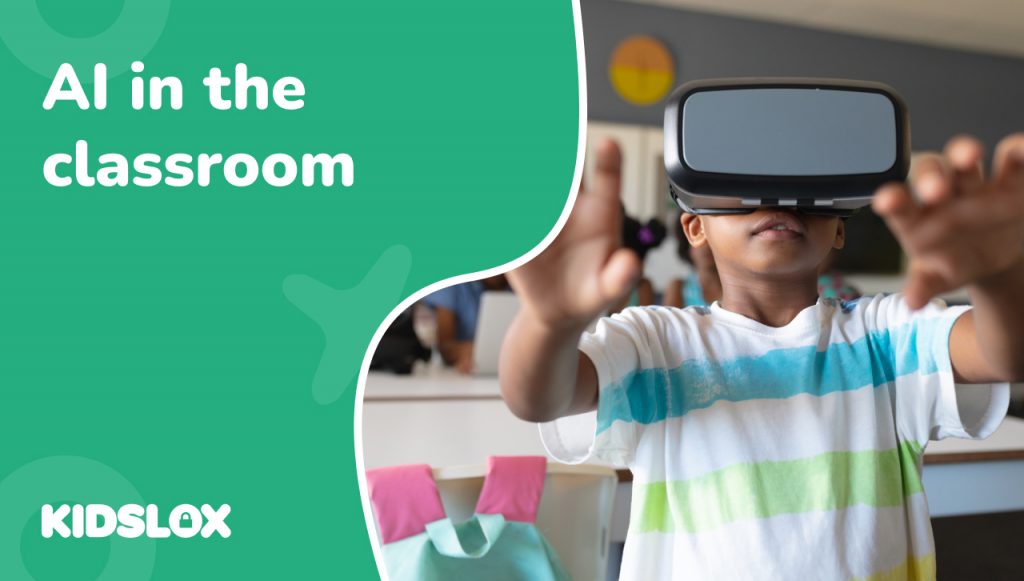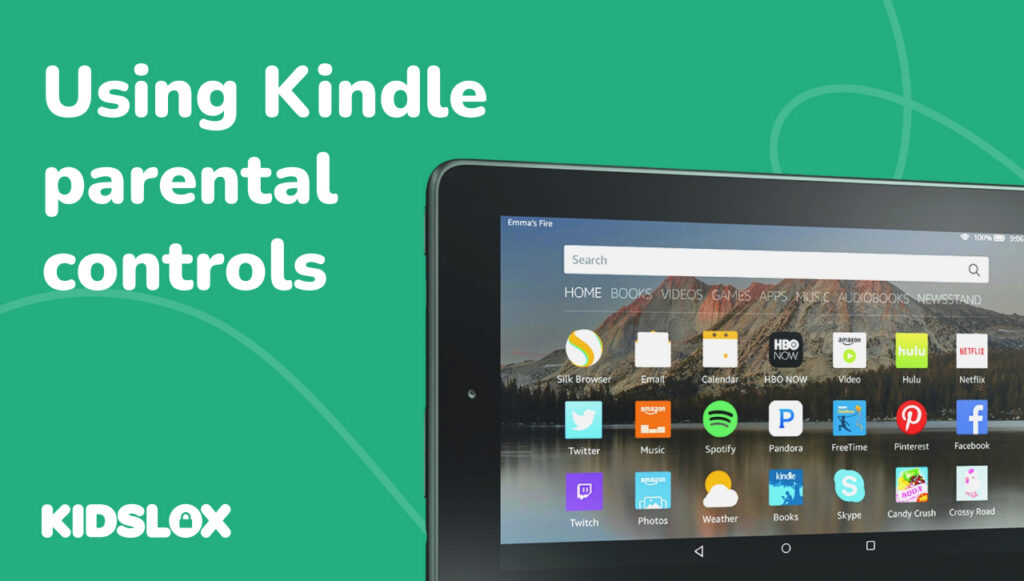It seems like it was just yesterday that kids went from a traditional classroom setting to an iPad-first, hybrid school year model. And even then, it felt like the speed at which technology was infiltrating the education system was almost too much to keep up with. But if you think that was a whirlwind, brace yourself, because the next wave of innovation is already knocking at the classroom door: artificial intelligence (AI).
The idea of AI playing a role in how our children learn might sound like something ripped straight from a sci-fi novel.
However, the reality is that AI-powered tools are already being integrated into various aspects of education, from personalized learning platforms to grading systems and administrative tasks. And as the technology continues to evolve, its potential impact on the classroom is becoming increasingly significant – and polarizing.
On one hand, proponents of AI in education tout its ability to revolutionize teaching and learning, offering personalized instruction, enhanced accessibility, and innovative tools that could potentially improve learning outcomes. On the other hand, critics raise concerns about privacy, bias, and the potential erosion of human interaction and critical thinking skills.
As parents, educators, and stakeholders in the education system, it’s crucial to understand the implications – both positive and negative – of this technological shift. Let’s explore the various ways AI is being introduced into classrooms, explore the potential benefits and challenges, and examine the current concerns around this new technology.
From Science Fiction to Modern Reality
For many parents who grew up with science fiction movies and books, “artificial intelligence” likely conjures up images of humanoid robots with advanced cognitive abilities capable of independent thought and action.
And while this futuristic vision of AI has captured our imaginations, the reality of modern AI systems is quite different – and in many ways, the new technologies are more impressive.
Through AI, machines can copy human intelligence and perform tasks that require human thinking, such as learning, problem-solving, deciding, and even being creative.
AI technology is already at work in various fields, including education, where it supports personalized learning, administrative tasks, and improved educational outcomes.
However, instead of physical robots, much of the AI we interact with today exists in the digital realm, powering everything from virtual assistants and recommendation engines to self-driving cars and medical diagnosis systems.
What Is Generative AI?
One of the most recent and remarkable developments in AI is the emergence of generative AI models like ChatGPT. These systems are trained on vast amounts of data, allowing them to understand and generate human-like text, code, images, and even audio.
ChatGPT, in particular, has garnered widespread attention for its ability to engage in natural language conversations, answer questions, and assist with various tasks, from writing essays to debugging code.
As they get “smarter,” AI language models are being utilized to spur scientific thinking in elementary education by engaging students in critical thinking activities, where they analyze and verify the accuracy of AI-generated responses.
While generative AI models like ChatGPT are impressive, it’s crucial that we note that they are not sentient beings with true understanding or consciousness (at least, not yet!)
Instead, they rely on advanced machine learning algorithms and statistical models to analyze and generate outputs based on the data they’ve been trained on. This means that artificial intelligence models are only as “smart” as the data they are trained on – and knowing what that data is key.
In education, AI systems like ChatGPT offer a glimpse into the potential of using AI as a teaching aid, personalized tutor, or writing assistant. However, their integration into classrooms also raises important questions about the role of technology in learning, the potential risks of over-reliance on AI, and the need to balance these tools with human expertise and critical thinking skills.
What’s The Role of AI in Education?
Personalized Learning and Grading Assistance
One of the most promising applications of AI in education is personalized learning. AI can also engage elementary students in various educational activities, such as animating drawings and using AI-generated images as writing prompts.
Traditional one-size-fits-all classroom approaches often struggle to cater to students’ unique learning styles, paces, and needs.
AI-powered adaptive learning platforms can analyze individual performance, identify strengths and weaknesses, and dynamically tailor content and delivery methods. This personalized approach enhances engagement, improves comprehension, and can lead to better overall learning outcomes.
AI is also being leveraged to assist educators with tasks like grading and assessment. Automated systems can quickly and consistently evaluate student work, saving teachers valuable time to provide meaningful feedback and support. AI can also analyze data to pinpoint where individuals or groups may be struggling, allowing educators to proactively adjust strategies.
Administrative Efficiency and Student Support
It’s not just academics where AI is having an impact. AI is transforming administrative and operational aspects of education as well.
Intelligent chatbots and virtual assistants handle routine inquiries and tasks, reducing staff workloads and ensuring efficient communication with students and parents. Many teachers use AI tools to save time—they organize lesson plans, give feedback on assignments, build rubrics, compose emails to parents, and write letters of recommendation. AI-powered scheduling and resource allocation optimize class times, room usage, and material distribution.
Another key area is student support. AI opens doors for students with special needs or learning difficulties – particularly when human-first resources are sparse. Speech recognition aids accessibility, while intelligent tutoring systems adapt to neurodivergent students’ unique requirements, fostering an inclusive environment.
Balancing Innovation and Human Elements
As exciting as AI’s educational applications are, challenges surrounding data privacy, ethics, and the need for human oversight must be carefully navigated. AI should augment skilled educators, not replace them. The goal is striking a balance – leveraging AI’s power to enhance learning experiences while preserving essential human elements.
Are There Benefits of AI in the Classroom?
Integrating artificial intelligence into educational settings holds promise, as it offers a range of potential benefits that could revolutionize the way students learn and teachers instruct.
High school students, in particular, can benefit from the responsible use of AI tools, such as ChatGPT, to help research and formulate content while understanding the necessity of editing and reviewing AI-generated content.
AI also helps personalize learning experiences to enhance accessibility and engage interactive tools. AI has the potential to transform classrooms into dynamic environments tailored to individual needs and optimized for better learning environments – if we handle it properly.
What Are The Risks of Using AI Tools In The Classroom?
As transformative as AI’s potential in education may be, integrating AI into classrooms is not without significant risks and challenges that demand careful consideration.
There are ethical quandaries and practical hurdles – so a thoughtful approach to AI in the classroom is necessary to avoid potential pitfalls. After all, our goal should be to see AI serve as a force for good in the learning environment!
Algorithmic Bias In Preparing Students
A primary concern is the potential for AI systems to perpetuate or amplify existing societal biases.
These algorithms, which are a part of AI technology, are trained on vast datasets. If those datasets are not diverse, representative, or free from prejudices, the resulting models could unfairly disadvantage certain student groups, particularly those from underrepresented or marginalized communities.
Privacy and Data Security Vulnerabilities
Effective AI implementation often necessitates collecting and analyzing extensive student data, including personal information, academic records, and behavioral patterns.
While AI-powered tools offer personalized learning experiences, they also raise concerns about mishandling or unauthorized access to such sensitive data, which could have severe consequences, raising significant privacy and security apprehensions.
Overdependence and the Erosion of Human Connection To Teach Students
While AI can enhance learning, an over-reliance on these technologies risks neglecting human interaction and the development of crucial social and interpersonal skills. Many teachers have expressed concerns that education transcends knowledge transmission; it fosters emotional intelligence, critical thinking, and collaboration and communication.
Generative AI Tools and Academic Integrity
The rise of powerful generative AI models like ChatGPT introduces new challenges in maintaining academic integrity. High school students, in particular, face unique challenges in responsibly using these tools.
With the ability to generate human-like text, code, and even multimedia content, these systems raise concerns about potential misuse for cheating or plagiarism, undermining the very foundations of learning and assessment.
A Parent’s Guide to Raising Responsible AI Navigators
As AI becomes a natural part of education and daily life, we as parents and guardians need to step into the role of guide – equipping our children with the knowledge and skills necessary to interact with these powerful technologies responsibly and ethically.
A proactive and open approach can empower young minds to use AI while navigating its complexities with wisdom and discernment, helping AI become an aid in the process rather than an obstacle to learning and engaging with the world.
Foster AI Understanding and Awareness
The first step in guiding children through the AI landscape is to demystify the technology itself. Engage in age-appropriate conversations about what AI is, how it works, and its diverse applications in various fields, including education, where AI technology can enhance personalized learning, provide administrative support, and improve educational outcomes.
Encourage curiosity and dispel any myths, such as the notion that AI systems are sentient beings with human-like intelligence. Help them understand that while AI can be incredibly useful, it is a tool that should be used responsibly and in conjunction with human expertise and ethical considerations.
Cultivate Critical Thinking and Responsible AI Interactions
Kids will eventually engage with AI, so teaching children how to interact with these systems critically and responsibly is key.
Be proactive by encouraging them to question the outputs and recommendations provided by AI language models rather than blindly accepting them as truth. Discuss the potential for biases and limitations within AI models and emphasize the importance of cross-checking information from multiple reliable sources.
A great way to help bridge the gap? Engage in discussions about AI’s ethical implications, such as privacy concerns, algorithmic biases, and the potential impact on human employment. Foster an understanding of the need for transparency, accountability, and responsible development and deployment of AI systems.
Upholding Academic Integrity in the Age of Generative AI
The rise of powerful generative AI models like ChatGPT and other AI-powered tools has introduced new challenges to maintaining academic integrity.
With the ability to generate human-like text, code, and even multimedia content, these systems raise concerns about potential misuse for cheating or plagiarism. As a parent, having open and honest conversations with your children about the importance of academic honesty and the consequences of cheating is becoming more and more necessary.
Emphasize that while AI can be a valuable tool for research, learning, and ideation, it should never be used to produce work passed off as one’s own. Encourage your children to seek guidance from educators and educational resources on properly citing and attributing AI-generated content.
Most importantly, foster a growth mindset and a love for learning. Remind your children that true knowledge and understanding come from actively engaging with the material, asking questions, and developing their critical thinking skills – something AI alone cannot provide.
Embracing AI in Education
While the concerns surrounding AI in the classroom are valid – from potential biases and privacy risks to the erosion of human connections – we must also recognize the technology’s potential.
Integrating AI can personalize learning experiences, enhance accessibility, and provide innovative tools that can revolutionize how our children acquire knowledge and develop essential skills.
The key lies in striking a balance – harnessing the power of AI while ensuring that the human elements that make education so profound are never neglected. As we navigate this uncharted territory together, remember that you are not alone.
Kidslox is committed to staying at the forefront of parental technology, providing parents and guardians with the resources and guidance they need to empower their children in this rapidly evolving landscape. Visit us online for more great guides, articles, and insights that will help you embrace the power of AI while prioritizing the human-first interactions crucial to your child’s holistic development.





